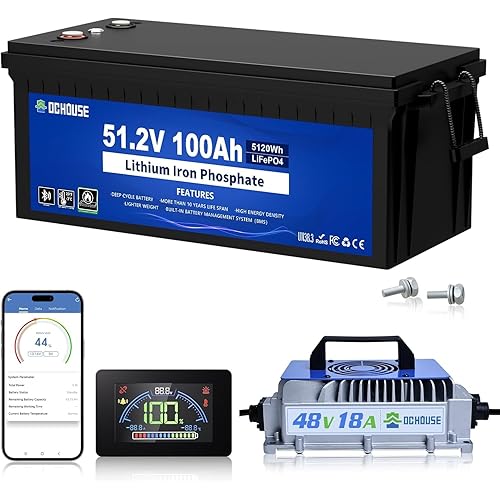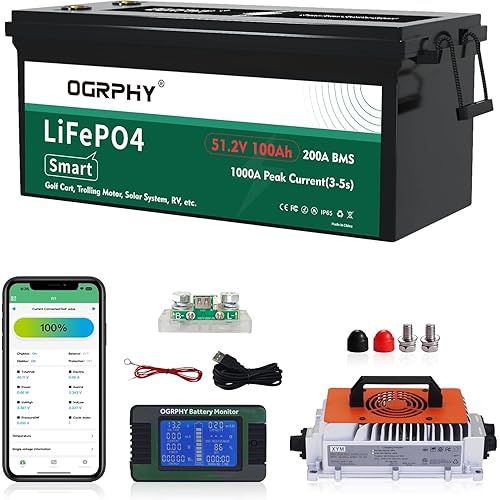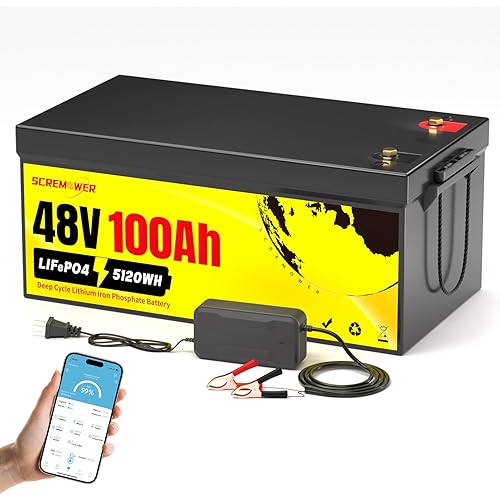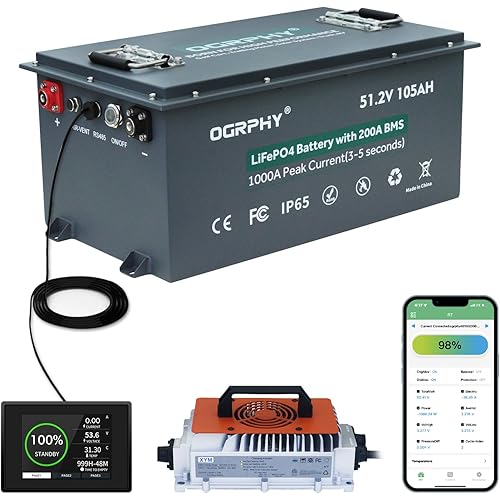Cloudenergy 48V(51.2V) 105Ah LiFePO4 Lithium Golf Cart Battery Built-in 250A BMS,with Mobile APP,Touch Monitor and retention strap,6000+ Cycles,Perfect for Golf Carts(GFA48V-105AH With Charger)







Buy Now, Pay Later
- – Up to 36-month term if approved
- – No impact on credit
- – Instant approval decision
- – Secure and straightforward checkout
Ready to go? Add this product to your cart and select a plan during checkout.
Payment plans are offered through our trusted finance partners Klarna, Affirm, Afterpay, Apple Pay, and PayTomorrow. No-credit-needed leasing options through Acima may also be available at checkout.
Learn more about financing & leasing here.
30-day refund/replacement
To qualify for a full refund, items must be returned in their original, unused condition. If an item is returned in a used, damaged, or materially different state, you may be granted a partial refund.
To initiate a return, please visit our Returns Center.
View our full returns policy here.
Recently Viewed
Features
- 24 hours Customer ServiceCloudenergy provides technical support and online customer service with fast feedback within 24 hours. If you have any product-related issues or questions, please get in touch with us directly, Cloudenergy support team is always here for you.
- 3-in-1 PackageCloudenergy 48V (51.2V) 105Ah Lithium-Ion Golf Cart Battery, the kit comes with everything! Comes with a high-performance 58.4V 20A Li-Ion quick charger, a 2.8-inch LCD touch screen (for real-time battery information), and a 78.74-inch battery mounting strap to make battery installation easy and secure!
- Built-in Bluetooth 250A BMS Cloudenergy golf cart 48V 105Ah lithium battery built-in Bluetooth BMS, easy to monitor the battery information, and both high-performance charging and discharging protection, With a great 10.24kw power,constant discharge 250A(Peak 400A 35S, 600A 3S). BMS configured with low-temperature cut-off technology can effectively prevent over-charging, over-discharging, over-current, short-circuit and over-temperature.
- 6000+ deep cycles & 80% DODCloudenergy 48V 105Ah LiFePO4 battery provides more than 6000 deep cycles compared to traditional lead-acid batteries only about 300-600 cycles, which extends the battery lifespan more than 10 times. 6000+ deep cycles using life and 80% depth of discharge are also better than many LiFePO4 battery of other brands.
- Safe and Reliable Power SourceCloudenergy golf cart 48V 105Ah batteries are designed for 48V golf carts, utilizing high-density A-grade cells for high energy(Support 2C Discharge) and performance,The battery case is made of ABS, which is fireproof shockproof and IP67,Compatible with all major brands of golf cart controllers on the market,they are ideal for golf carts,electric vehicles,Trolling Motor,marine engines and other applications.
Brand: Cloudenergy
Size: GFA48V-100AH With Charger
Product Dimensions: 10.59"D x 20.55"W x 8.66"H
Number Of Cells: 16
Resistance: 20 Milliohms
Terminal: M8
Automotive Fit Type: Universal Fit
Manufacturer: Cloudenergy
Brand: Cloudenergy
Size: GFA48V-100AH With Charger
Product Dimensions: 10.59"D x 20.55"W x 8.66"H
Number Of Cells: 16
Resistance: 20 Milliohms
Terminal: M8
Automotive Fit Type: Universal Fit
Manufacturer: Cloudenergy
Model: GFA48V-100AH With Charger
Item Weight: 82.7 pounds
Item model number: GFA48V-100AH With Charger
Batteries: 16 Lithium Ion batteries required.
Manufacturer Part Number: GF2024046
Date First Available: April 26, 2024
Frequently asked questions
To initiate a return, please visit our Returns Center.
View our full returns policy here.
- Klarna Financing
- Affirm Pay in 4
- Affirm Financing
- Afterpay Financing
- PayTomorrow Financing
- Financing through Apple Pay
Learn more about financing & leasing here.
Similar Products
Top Amazon Reviews

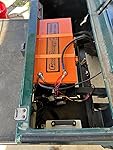











![Apple Watch Ultra 2 [GPS + Cellular 49mm] Smartwatch with Rugged Titanium Case & Blue/Black Trail Loop M/L. Fitness Tracker, Precision GPS, Action Button, Extra-Long Battery Life](https://m.media-amazon.com/images/I/81zioALMaAL._AC_US500_.jpg)
